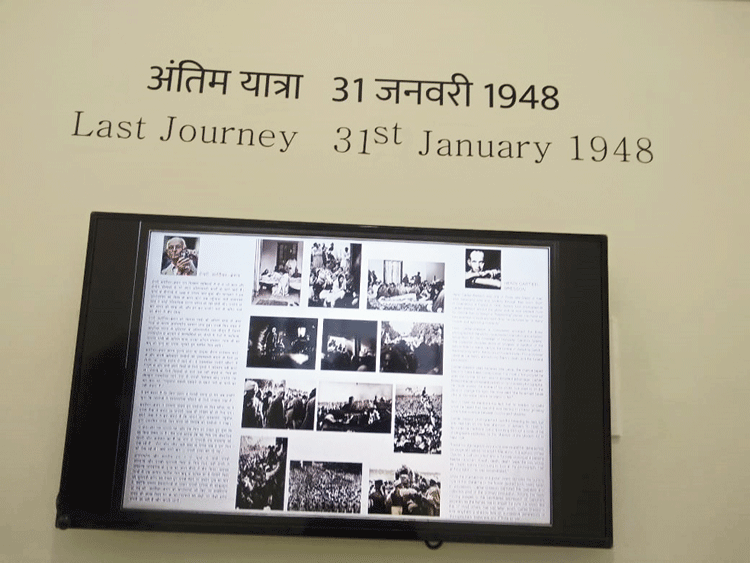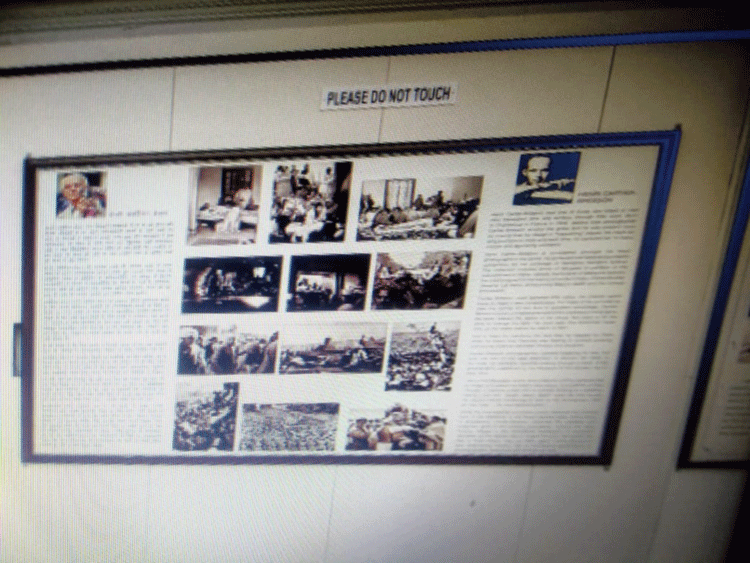
The replacement Sourced by the Correspondent
The removal of Henri Cartier-Bresson’s photographs of the aftermath of Mahatma Gandhi’s assassination from the Gandhi Smriti and Darshan Samiti’s lobbies on the plea of digitisation has alarmed Gandhians.
The move comes at a time the government is planning to remove the Mahatma’s favourite hymn, Abide With Me, from the January 29 Beating the Retreat Parade.
Gandhi’s great-grandson Tushar Gandhi had sounded the alarm after a visit on Thursday to Gandhi Smriti, where Cartier-Bresson’s photographs have been digitised and displayed on LED screens.
“Shocked. The evocative photo gallery… (has) been removed from display on the orders of The Pradhan Sevak. Bapu’s murderers are obliterating historic evidence. He Ram!’’ he tweeted.
He followed it up with an article in The Print, a news portal, on why the digitisation justification did not cut ice.
Detailing the images removed, Tushar Gandhi wrote: “Together, these images and their captions explained the history and gave a very detailed and emotional description to the visitors…. Removing these panels felt like a conspiracy to dilute and erase the evidence of the assassination of Gandhi by those whose ideology had allowed such a tragedy.’’
Others were dismayed too. National Gandhi Museum director A. Annamalai, who visited the museum after Tushar Gandhi’s article, told The Telegraph: “The original ethos of Gandhi should be preserved. Upgrade is one thing, but the basic ethos should not be tinkered with. Gandhi’s life was about simplicity and his memorials must retain that.’’
He said the missing exhibits had presented Gandhi’s entire life in a chronological order right up to his funeral through sepia-toned photographs and write-ups in both Hindi and English.
“Now this photographic exhibition ends with Partition with no mention of his life after August 1947. The next panel shows a village society.’’
Annamalai said Gandhi Smriti officials had told him that the panels bearing Cartier-Bresson’s photographs had got damaged and would be replaced after restoration. “In this day and age, this can be done in a matter of hours. The (Gandhi Smriti), after all, is the place where Gandhiji was assassinated,’’ he said.
Further, he said, the Cartier-Bresson photographs were available with other Gandhian institutions, including his own, and the Gandhi Smriti could have sourced a fresh copy from any of them and replaced the two panels immediately. “Which is why the clarifications from the government are difficult to believe.’’
On Sunday, the two panels were yet to be back on the walls. Gandhi Smriti director Dipankar Gyan told this newspaper there was no question of tinkering with history. “It’s all available in the digital format. We are digitising it phase-wise; it’s a work in progress.’’
Indeed, the two panels are part of the digital version titled “Last Journey 31st January, 1948” but Annamalai and other Gandhians insist that to watch a life story in pictures on LED screens is not the same as walking through the lobbies reading the easily accessible panels.
“One has to wait for the pictures to come up. Nor are the write-ups easy to read since the screen is small compared to the panels,” Annamalai said.
“Also, when groups (of visitors) come, how many will crowd around the LED screen? In the exhibition format, people can just walk around at their own pace and decide what to focus on.”
The Mahavir Tyagi Foundation for Political and Economic Decency too has disapproved of the “recent tinkering’’ with the Gandhi Smriti photos.
“Such tinkering is especially suspect as these relate to the Mahatma’s assassination and after,’’ the foundation said in a statement. Uma Rani, a trustee, said the panels must be replaced since Birla House — now Gandhi Smriti — is associated with Gandhi’s assassination.
The foundation has also urged the President and the defence minister to reverse the decision to drop Gandhi’s favourite hymn from the Beating the Retreat ceremony. Defence ministry officials had last week said the hymn would likely be replaced with Vande Mataram.
In a letter to Gulchen Lumsden on February 10, 1933, Gandhi had said: “This time Sir Henry Lawrence was right when he told you that ‘Abide with me’ was one of my favourite hymns. Though I am a devout Hindu, or even because I am a devout Hindu, I have no difficulty in appreciating the devotional hymns of other religions….”
The hymn has been part of Beating the Retreat since 1950.
The two changes have revived memories of the Atal Bihari Vajpayee government’s efforts to “re-edit” the Collected Works of Mahatma Gandhi to bring about uniformity, strict chronology and authenticity. The revised edition of the 100 volumes contained flaws and omissions, resulting in its withdrawal.










